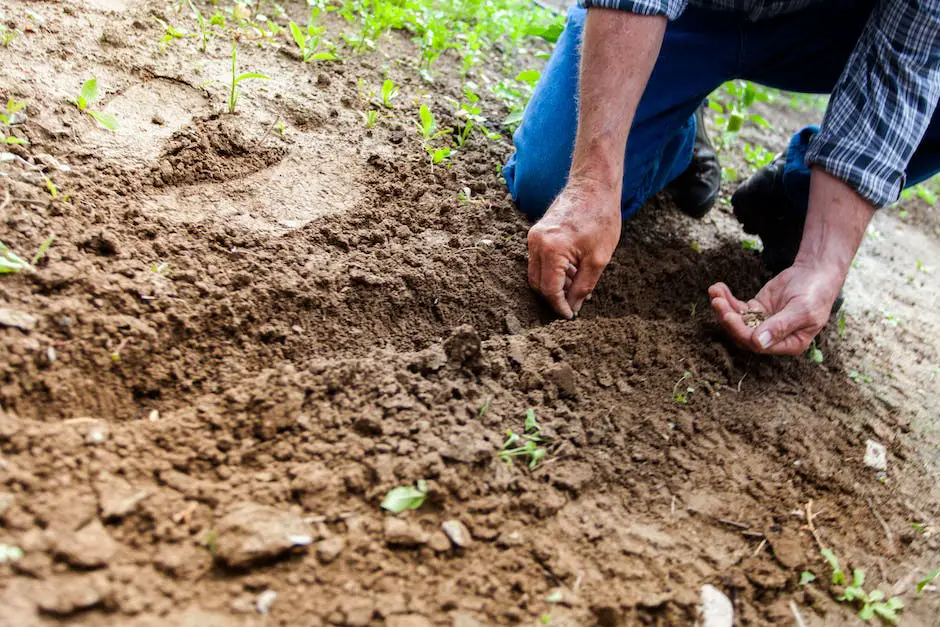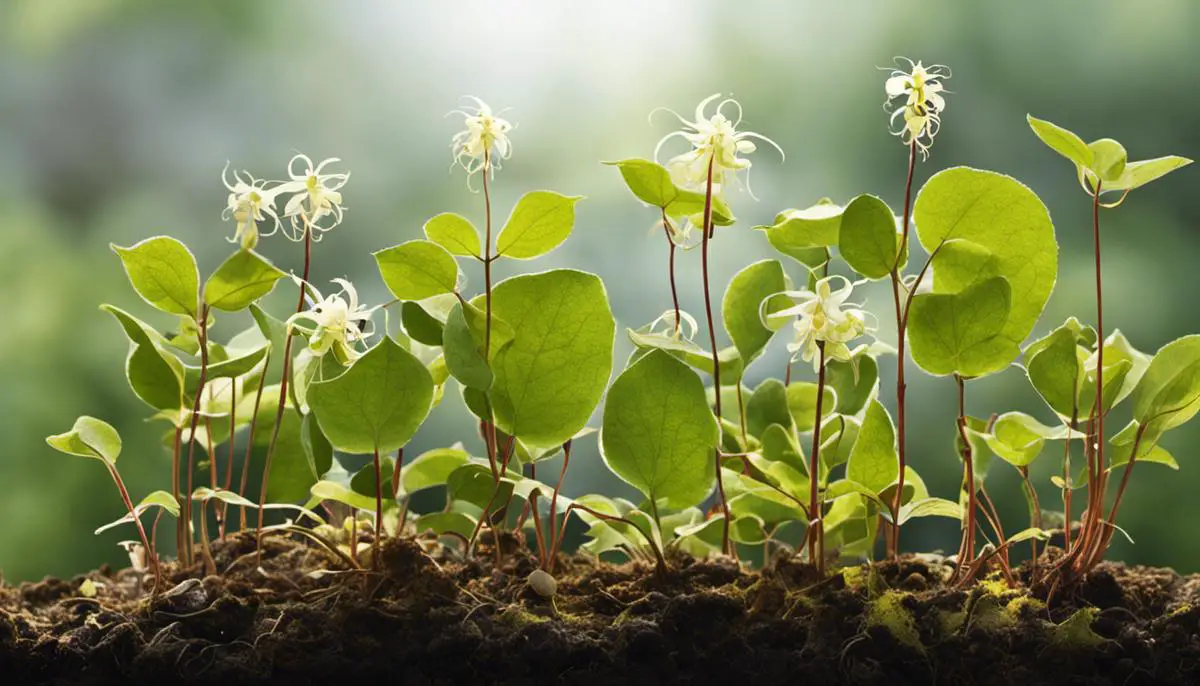A Simple Guide to Planting Epimedium
Cultivating a touch of nature’s magic in your back garden or patio pots, requires not just a green thumb but an understanding of the plant you seek to grow. Epimedium, a perennial plant originating from China, is renowned for its vibrant flowers and leaf patterns, capable of infusing charm into any gardening space. This piece will shed light on Epimedium – its different species, the parameters for site preparation, along with valuable insights on how to care for the plant, and successful propagation. Brace yourself for an exciting journey as you immerse yourself in the world of Epimedium, where gardening meets art, backed by science and a dash of practical expertise.
Understanding Epimedium Species
Understanding Epimedium Species
Epimedium species, also known as barrenwort, are herbaceous perennials often used in shady, woodland gardens and ground covers. They are known for their heart-shaped foliage and colorful, airy flowers.
Different Types of Epimedium
There are several types of Epimedium species to consider for your gardening project. Some popular varieties include:
- Epimedium grandiflorum: Known for its larger flowers, this species is native to China, Korea, and Japan.
- Epimedium pinnatum: A type that offers yellow flowers and is known to spread more widely than other species.
- Epimedium brevicornu: This species is appreciated for the medicinal value it possesses.
- Epimedium perralchicum: Native to the western regions of Turkey, this species has large, shiny, evergreen leaves that are topped in spring with sprays of yellow flowers.
Each species has certain unique characteristics in terms of their color, size, and growth habits, which should influence your choice of what species to plant.
Identifying Ideal Conditions
Before planting any Epimedium species, it is essential to evaluate the conditions they need to thrive. Most Epimedium species prefer a shady to semi-shady area with well-drained, loamy soil. However, some, like the Epimedium pinnatum, can adapt to sunnier spots if properly watered.
Epimediums are generally drought-resistant once established, but for best results, they should be watered regularly during dry periods. Avoid overly wet or heavy soils, as these can lead to root rot.
Key Characteristics of Epimedium Species
The key characteristics of Epimedium species include a slow to moderate growth rate, and the ability to bloom in the spring with a variety of flower colors ranging from white and yellow to pink and purple. They display attractive foliage throughout the growing season and are typically deer-resistant – making them an appealing choice for many gardeners.
Caring for Your Epimedium
Successful care of your Epimedium requires regular maintenance. In early spring, prune back the old foliage to make way for new growth and to allow the blooms to take center stage. Feed with a general-purpose fertilizer at this time to encourage strong growth.
After blooming, Epimediums can look ragged, so it’s recommended to clip off withered flower stems. The plants are generally disease resistant and require little to no additional care throughout the growing season.
Remember that certain Epimedium species may have specific care requirements, so it is essential to research and understand these before planting. With the right knowledge and care, Epimedium species can be a long-lasting and beautiful addition to your garden.

Preparing the Site for Planting
Site Preparation for Planting Epimedium
To ensure successful growth of your Epimedium, it’s crucial to choose a suitable location and prepare the soil well in advance. Epimedium thrives best in partially shady regions. Too much sun can scorch the leaves, while excessive shade may lead to a decrease in flowering. Look for a location that receives morning sun and afternoon shade for optimal growth.
Type of Soil
Epimedium plants prefer loose, organic, well-draining soil. Heavy clay soils can suffocate the roots. To prepare your soil, start by clearing the area of weeds and other plants. If your soil is clay-like or sandy, improve it by adding compost or well-rotted manure. Incorporate these amendments into the top 12 to 18 inches of soil. This can be done by turning the soil over with a garden spade or tiller.
Soil pH
Epimedium plants do well in pH-neutral or slightly alkaline soils. You can perform a soil test to measure its pH level. If the soil is too acidic, you can add lime to increase the pH. Conversely, if the soil is too alkaline, mix in sulfur to decrease the pH.
Planting Distance
When planting multiple Epimedium plants, proper spacing ensures that each plant gets enough light and air circulation. Keep a distance of at least a foot between each plant. A good rule of thumb is to project the mature spread of the plant and give that much space to ensure that they grow to their full potential without competing for resources.
Best Time to Plant
The best time to plant Epimedium is in the spring or fall when the plant is dormant. These cooler seasons allow the plant to establish its roots before the stress of summer heat or winter cold. If you are planting bare-root Epimedium, soak the roots for a few hours before planting to ensure they absorb enough moisture.
In conclusion
To successfully plant Epimedium, consider the light, location, soil type, pH level, and planting distance. With these factors in place, you can enjoy the growth and blossoming of your Epimedium plants.

Growing and Care for Epimedium
Understanding Epimedium Growth Requirements
Epimedium, also known as barrenwort or bishop’s hat, is a perennial plant that thrives in cool, shady environments. To ensure healthy growth, it’s important to plant epimedium in a location that matches its natural growing conditions. Ideal locations are under the canopy of deciduous trees, though it can tolerate sunnier spots if the soil is adequately moist.
The soil should be well-draining yet capable of retaining moisture. A mixture of sandy loam and organic matter, such as compost or well-rotted manure, works well. Aim for a pH around 6.5 for optimal nutrient absorption.
Planting and Watering Epimedium
After choosing your ideal location, dig a hole twice the size of the root ball of your epimedium plant. Set the plant in the hole at the same level it was growing at its nursery pot. Fill in the hole with soil, pressing it gently around the plant to remove any air pockets. Water the freshly planted epimedium thoroughly.
Epimedium plants prefer soil that is consistently moist, but not waterlogged. Over-watering can cause root and stem rot. Underneath large trees or in areas with deep shade, where rain might not penetrate as easily, supplemental watering may be necessary during dry spells.
Fertilizer and Pruning Needs
Epimedium plants don’t require heavy feeding. Applying a slow-release, balanced fertilizer in the spring and late summer can help promote growth and flowers. Avoid a high-nitrogen fertilizer, which can lead to excessive leaf growth at the expense of blooms.
Pruning is not necessary for the health of the plant, but if you wish to manage its size or remove spent flowers, prune in the late winter or early spring. Cut back old leaf stems to ground level before new growth emerges.
Monitoring and Dealing with Pests and Diseases
Epimedium plants are fairly resilient, but can sometimes be affected by aphids, vine weevil, and rust. Monitor leaves and stems regularly for signs of disease, such as irregularities, discoloration, or general unhealthy appearances.
Aphids can be washed off with a strong blast of water or treated with insecticidal soap. Vine weevil and almost any soil borne diseases can be prevented by maintaining well-drained soil and avoiding waterlogged conditions. Rust can be treated with fungicides and by removing and destroying any infected plant material.
By paying attention to these care tips, you can ensure the healthy growth and beautiful blooms of your epimedium plants.

Harvesting and Propagation
Understanding Epimedium Propagation Methods
The methods of propagating Epimedium mainly include division, cuttings, and seeds. For division, the best time is either early spring before new growth begins or late autumn. To do this, lift the clump from the ground, separate it into smaller parts, ensuring each has a good amount of roots and shoots, and then plant them into a well-prepared soil.
For propagation through cuttings, take a sharp, sterilized knife and cut a piece of Epimedium stem containing a node (the knobby part on the stem), making sure to make the cut just below the node. Dip this cutting into rooting hormone powder and plant it into a container with well-draining soil, water it well, and place in a warm but shaded location.
Lastly, for propagation through seeds, collect ripe seeds in late Spring and sow them in a well-draining soil mixture. Place the container into a cold frame or unheated greenhouse and germination should take place within 1-3 months.
Determining the Best Propagation Method for Epimedium
The division method is the easiest and quickest way to propagate your Epimedium. Cuttings are also a viable method but can take longer to establish. Seed propagation is the slowest method and often takes a lot of patience, as Epimedium seeds can be slow to germinate and require specific conditions.
Harvesting Epimedium
Generally, Epimedium isn’t a plant that is traditionally harvested for use. However, some varieties are used in herbal medicine, and if you’re planning to harvest for this purpose, do so in the spring when the plants are blooming and the leaves are full. Use a sharp knife or shears to cut the stems and foliage you wish to use.
Preparing Epimedium for Winter
Epimedium is a tough, hardy plant and often doesn’t require special winter care. However, if you live in an area with particularly harsh winters, it can be advantageous to apply a generous layer of mulch around the base of the plants after the first hard frost to protect the roots. In early spring, before new growth begins, trim back any old, damaged, or dead leaves to make way for new foliage.
Storing Epimedium
If you have harvested Epimedium for medicinal use, store the cut stems and leaves in a cool, dry place until they have dried out completely. Once dry, they can be stored in a sealed container, in a cool, dark place until needed. This method ensures that they retain their medicinal properties for as long as possible. Keep in mind that not all Epimedium varieties are used medicinally, and it is always best to check with a trusted source before using.

Just as the joy of a garden is not the mere act of planting, but the thrill of watching a seed germinate, grow, and bloom, so is the journey with Epimedium. Successfully cultivating this captivating perennial is more about the mindful merging of knowledge, environment, and attentive care. This information about Epimedium species, its cultivation, care, and propagation, is an invitation to garden lovers to try their hand at nurturing this charming perennial. Armed with this knowledge, you can now turn your gardening space into an alluring haven sporting these splendid plants.

